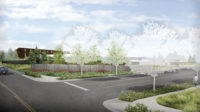The Sacramento Regional County Sanitation District may have to spend more than $2 billion over the next 10 years to improve water quality.
The Central Valley Regional Water Quality Control Board on Dec. 9 directed California’s capital city to remove ammonia and other residual materials from treated water before discharging it into the Sacramento River. The city’s 28-year-old plant releases as much as 180 million gallons of water per day into the delta-feeding waterway.
The controversial decision came after a contentious permit renewal process in which SRCSD estimated that, between the capital improvements, pilot studies and reports, rates for its 500,000 users will increase $61.50 a year, and new connection fees will increase by $13,000.
“The estimated cost is based on one set of treatment options,” said Prabhakar Somavarapu, SRCSD director of policy and planning. He intends to closely evaluate solutions based on price, effectiveness and the ability to continue operations during construction.
The preliminary multibillion-dollar estimate includes a $780-million price tag for a trickling filter system for nitrification and a fluidized bed reactor to remove ammonia nitrogen. Another $1.3 billion was estimated for introduction of an ultraviolet disinfection process. Barring an appeal, Somavarapu said SRCSD may have to add a membrane micro-filtration system.
Once options are selected, design could take two years and construction could take another five years. The goal is to complete the project by the end of 2019 to meet the Dec. 20, 2020, operational deadline.


Post a comment to this article
Report Abusive Comment